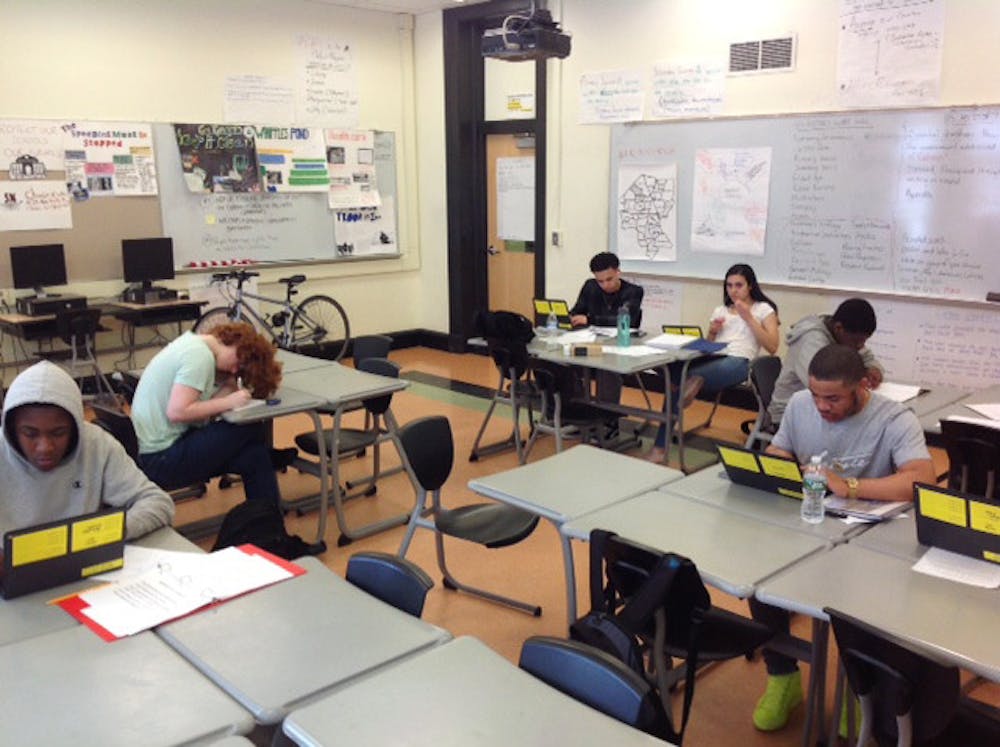As the world becomes increasingly data-oriented, one faculty-developed program aims to provide high school students with tools to understand and analyze the role of data. Bootstrap, a K-12 computer science curriculum, has recently launched a data science program, adding a fifth course to Bootstrap’s current four courses: Hour of Code, Reactive, Physics and Algebra, the most widely used program.
The program will be mainly designed for eighth grade classes and beyond, though a sixth grade class has used it, said Shriram Krishnamurthi, co-founder of Bootstrap and professor of computer science. Four teachers have piloted the new program this past academic year, and more teachers will be trained this summer, he said.
“I feel it’s vital for every student to have a basic understanding of a processing of data,” Krishnamurthi said. “People are being sent to jail and granted parole on the basis of data analysis. People are getting loans and … schools are being allocated funds on the basis of data analysis.” In order to be informed citizens, students need to understand what data exists, how it is processed and how it is used, he added.
Bootstrap is one of the programs featured at Computer Science Professional Development Week, a large professional teacher training that will take place this summer, Krishnamurthi said. The data science training will be offered in addition to the other four courses, Krishnamurthi added. “These programs take five to six years to fully mature, so in about five years, (the data science program) will be as comprehensive as Algebra. But the material is already out there, and people are already using it.”
Sam Dooman GS co-taught the pilot program at Providence’s Central High School in a social studies class in March. “I’m the main author of the curriculum, so this was the first test of the material in the hands of students and a teacher who didn’t have a big programming background but wanted to expose her students to … data science in the context of sociology,” Dooman said.
The pilot helped Bootstrap designers figure out where errors in the material existed and places where students needed additional support, Dooman said, adding that the experience allowed the writers of the curriculum to refine the programming language, Pyret, that is used in the curriculum and was developed by Brown faculty.
The students Dooman taught were quickly able to “latch onto the core concepts,” and they all produced a final project using data related to public schools in Rhode Island, he said.
“In order to properly motivate the use of these data sets, students need to be working with real data that have real implications,” Dooman said. “We’re in the process of gathering a bunch of different real world data sets” to be used in this course, he added.
Bootstrap is currently a free program, funded by various organizations, including the National Science Foundation. One of Bootstrap’s goals is to provide equitable computer science education to underrepresented groups according to race, gender, income and ability, Krishnamurthi said. “We work a lot with public schools. We do not cherry pick schools,” he added. “In fact, when we admit schools for CSPdWeek, we explicitly give preferential treatment to schools that” are more diverse, he said, adding that the curriculum and structure of Bootstrap is designed to be accessible for students of all backgrounds.
“Getting computer science into (underfunded) schools isn’t easy,” so incorporating computer science into already existing classes can “save a lot of logistical headaches to the school,” said Kathryn Fisler, co-founder of Bootstrap and adjunct professor of computer science.
“If you just let computer science be a class that students can opt into as an elective, we get a very skewed demographic of students opting in. But if you can get computer science into a class that everyone is already taking, then you smooth out the diversity profile,” Fisler said.
Students should not have to take a specific computer science course just to get exposed to the tools of data analysis, which supplement their learning in other classes, Fisler added.
“There is a huge need for computer scientists in the education space, and I hope that more people who are lucky enough to have the Brown computer science education will help push it forward,” Dooman said.





